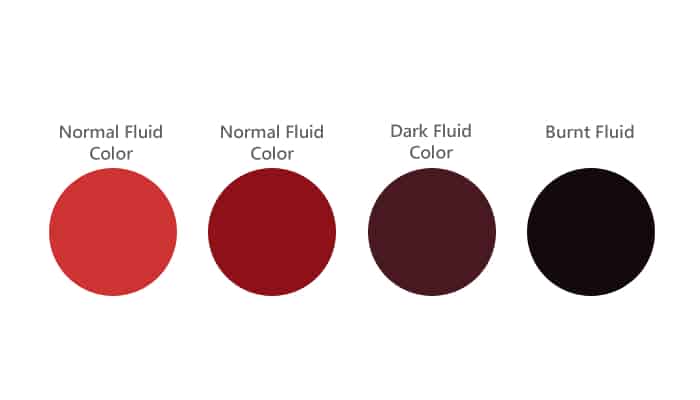Understanding Transmission Fluid Specifications
When it comes to maintaining your 2008 Acura TL Type S, one of the most critical components to keep an eye on is the transmission fluid. This fluid plays a vital role in ensuring your vehicle operates smoothly and efficiently. Let’s dive into the specifications and recommendations provided by the manufacturer, so you can keep your ride in top shape.
Manufacturer Recommendations
| Popular posts |
|---|
| What to do to prolong the life of your manual gearbox |
| Automatic transmission: what it is, how it works |
Acura has specific guidelines for the type of transmission fluid that should be used in the TL Type S. Following these recommendations is crucial for optimal performance and longevity of your transmission. Here’s what you need to know:
Type of Transmission Fluid
The 2008 Acura TL Type S requires a specific type of automatic transmission fluid (ATF) known as Honda ATF-Z1. This fluid is specially formulated to meet the needs of Honda and Acura vehicles, ensuring proper lubrication, cooling, and operation of the transmission components.
Viscosity and Performance Characteristics
The viscosity of the transmission fluid is essential for its performance. Honda ATF-Z1 has a viscosity rating that allows it to maintain its properties under various temperature conditions, ensuring smooth shifting and reducing wear on transmission parts.
Here are some key performance characteristics of Honda ATF-Z1:
- Excellent thermal stability
- High resistance to oxidation
- Effective anti-wear properties
- Good low-temperature fluidity
These characteristics help prevent transmission overheating and ensure that the fluid remains effective over time.
Fluid Specifications
To ensure you’re using the right transmission fluid, it’s essential to understand the specifications set forth by the manufacturer. Here are the critical specifications for Honda ATF-Z1:
| Specification | Details |
|---|---|
| Type | Automatic Transmission Fluid (ATF) |
| Viscosity | Multi-viscosity, suitable for a wide range of temperatures |
| Compatibility | Designed for Honda and Acura vehicles |
| Color | Typically a reddish hue |
Why Use the Recommended Fluid?
Using the recommended Honda ATF-Z1 is not just a suggestion; it’s a necessity. Here are a few reasons why sticking to the manufacturer’s specifications is crucial:
- Performance: The right fluid ensures that your transmission operates smoothly, providing seamless gear shifts.
- Longevity: Using the specified fluid helps extend the life of your transmission, reducing the likelihood of costly repairs.
- Warranty Compliance: If your vehicle is still under warranty, using the recommended fluid is essential to avoid voiding your warranty.
In summary, understanding the specifications and recommendations for your 2008 Acura TL Type S transmission fluid is vital for maintaining your vehicle. Stick to Honda ATF-Z1, and you’ll be on the right track to keeping your transmission running smoothly for years to come.
Recommended Oil Brands for Your Transmission Fluid
When it comes to maintaining your 2008 Acura TL Type S, choosing the right transmission fluid is crucial. While Honda ATF-Z1 is the manufacturer-recommended fluid, many owners have shared their experiences with various brands that meet or exceed these specifications. Let’s explore some of the most recommended oil brands based on feedback from forums and owner reviews.
Honda Genuine ATF-Z1
It’s no surprise that the most recommended option is the Honda Genuine ATF-Z1. This fluid is specifically formulated for Honda and Acura vehicles, ensuring compatibility and optimal performance. Owners frequently report that using this fluid results in smooth shifting and reliable operation.
- Trusted by many Acura enthusiasts
- Maintains performance even under extreme conditions
- Widely available at dealerships and auto parts stores
Valvoline MaxLife ATF
Valvoline MaxLife ATF is another popular choice among Acura TL Type S owners. This fluid is designed for high mileage vehicles and is compatible with Honda ATF-Z1 specifications. Many users have noted improvements in shifting performance after switching to Valvoline.
- Offers excellent wear protection
- Helps prevent transmission leaks
- Available in most auto parts stores
Royal Purple Max ATF
Royal Purple is known for its high-performance lubricants, and their Max ATF is no exception. This synthetic fluid is designed to provide superior protection and performance. Owners who have used Royal Purple Max ATF report enhanced shifting and overall transmission responsiveness.
- High resistance to thermal breakdown
- Improves fuel efficiency
- Compatible with Honda ATF-Z1 specifications
Mobil 1 Synthetic ATF
Mobil 1 Synthetic ATF is another brand that has garnered positive feedback from Acura TL Type S owners. This synthetic fluid is engineered to provide excellent protection and performance in a wide range of temperatures. Users appreciate its ability to maintain smooth operation even in extreme driving conditions.
- Excellent cold weather performance
- Reduces friction and wear
- Compatible with multiple vehicle makes and models
Amsoil Synthetic Universal ATF
Amsoil is a well-respected name in the synthetic oil industry, and their Synthetic Universal ATF is a favorite among many Acura owners. This fluid is designed to meet or exceed the requirements of Honda ATF-Z1, making it a reliable alternative.
- Long-lasting protection against wear
- Improves shifting performance
- Suitable for high-performance applications
Castrol Transmax Import Multi-Vehicle ATF
Castrol Transmax Import Multi-Vehicle ATF is another option that has received positive reviews from Acura TL Type S owners. This fluid is formulated for use in various import vehicles, including Honda and Acura, making it a versatile choice.
- Provides excellent protection against sludge and deposits
- Compatible with multiple transmission types
- Widely available and affordable
Owner Feedback and Experiences
Many Acura TL Type S owners have shared their experiences on forums, highlighting the importance of using quality transmission fluid. Here are some common themes from owner feedback:
- Consistency in performance: Owners report that using reputable brands leads to consistent shifting performance, reducing the likelihood of transmission issues.
- Improved longevity: Many users have noted that switching to high-quality synthetic fluids has extended the life of their transmissions.
- Cost-effectiveness: While some premium brands may be more expensive upfront, owners often find that the long-term benefits outweigh the initial costs.
In summary, while Honda ATF-Z1 is the go-to choice for your 2008 Acura TL Type S, several other reputable brands can provide excellent performance and protection. Owners have shared their positive experiences with these alternatives, making them worth considering for your next fluid change.
Change Interval for Transmission Fluid
Maintaining your 2008 Acura TL Type S involves regular checks and changes of the transmission fluid. Understanding the change interval is crucial for ensuring your vehicle operates smoothly and efficiently.
Recommended Change Interval
For the 2008 Acura TL Type S, the general recommendation for changing the transmission fluid is every 30,000 to 60,000 miles (approximately 48,000 to 96,000 kilometers). However, this can vary based on driving conditions and habits. Here are some factors to consider:
- Driving Conditions: Frequent stop-and-go traffic, towing, or driving in extreme temperatures can necessitate more frequent changes.
- Driving Style: Aggressive driving can lead to increased wear on the transmission, which may require more regular fluid changes.
- Fluid Condition: Regularly checking the condition of the fluid can help determine if it needs to be changed sooner. Look for discoloration or a burnt smell.
Partial Transmission Oil Changes
In many cases, a full transmission fluid change requires removing the transmission from the vehicle, which is a labor-intensive and costly process. As a result, many owners opt for partial transmission oil changes, which can still provide significant benefits.
What is a Partial Transmission Oil Change?
A partial transmission oil change typically involves draining a portion of the old fluid and replacing it with new fluid. This method is often more accessible and less expensive than a full fluid change.
Benefits of Partial Changes
Here are some advantages of opting for partial transmission oil changes:
- Cost-Effective: Partial changes are generally less expensive than full fluid changes, making them a more budget-friendly option for maintenance.
- Less Labor-Intensive: Since it doesn’t require removing the transmission, the labor involved is significantly reduced.
- Improved Fluid Quality: Regular partial changes can help maintain better fluid quality, as new fluid is continuously introduced into the system.
- Reduced Contaminants: Over time, transmission fluid can become contaminated with metal particles and debris. Partial changes help to dilute these contaminants.
Statistical Justification
According to various automotive maintenance studies and data from transmission specialists, regular fluid changes—whether partial or full—can significantly extend the life of a transmission. For instance, a study by the Automotive Service Association (ASA) found that vehicles that had regular fluid changes experienced fewer transmission failures compared to those that did not.
Additionally, a survey conducted by the Transmission Repair Association indicated that 70% of transmission failures are due to overheating and fluid breakdown, both of which can be mitigated by maintaining proper fluid levels and quality through regular changes.
In summary, while the recommended change interval for your 2008 Acura TL Type S is every 30,000 to 60,000 miles, considering partial transmission oil changes can be a practical and effective way to maintain your vehicle’s transmission health without the need for a full fluid change.
What Color Should Transmission Fluid Be?


